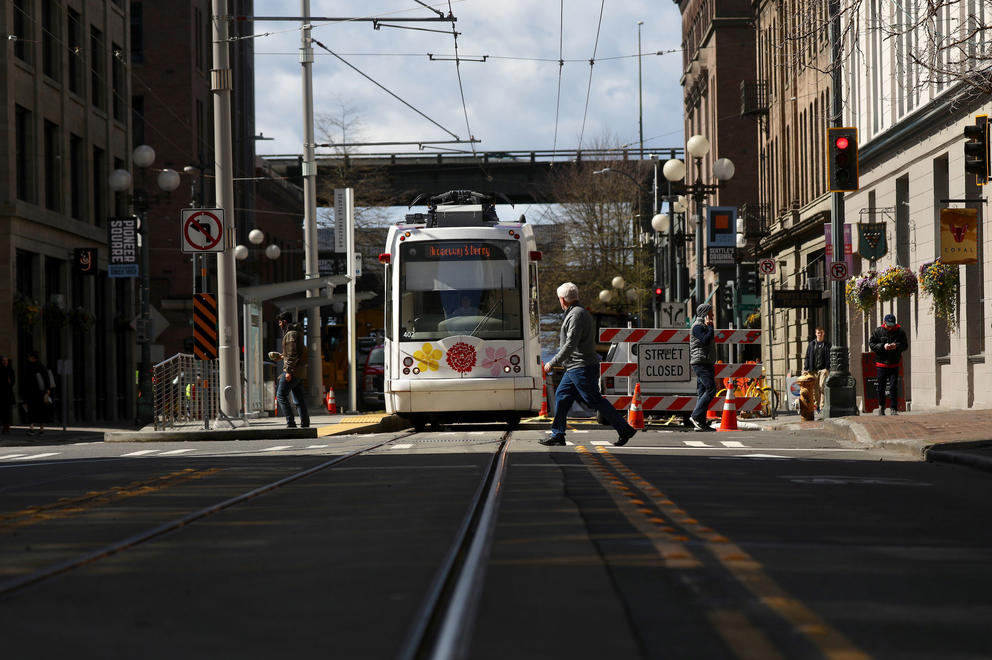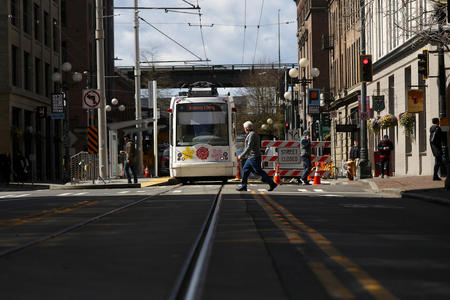“I believe it’s my job as mayor to ask the hard questions about how we’re using taxpayer dollars,” she said, expressing her frustration with how this whole project has unfolded. “The work wasn't done in a way that the people of Seattle and the city council had better information about the true costs of this project.”
The good news is, Seattle’s projections for operating costs were deemed “reasonable” by consultants KPMG.
But the total estimated cost of building the project is now $252 million — more than $100 million more than the project’s original estimate and about $50 million more than last spring’s already-inflated cost. That estimate does not include work that would be necessary to accommodate longer and heavier streetcars.
So what’s a mayor to do? Cancelling the project is not without its own costs. The firm estimates that the city will spend at least $55.4 million even if the project is killed. And it could lose any hope of getting a $75 million federal grant and even endanger its ability to receive future grants.
Further, KPMG projects an enormous increase in ridership on all of the city’s streetcar lines if the project is allowed to go forward. And because it will be going through a dense urban core, the consultants believe the streetcar’s ability to recoup operating costs via fares, advertisements and other means to be “high.”
But the project is still surrounded with uncertainty. That $75 million grant is under review at the federal level, the future of other operating grants are uncertain, the delays may have spurred the need for renegotiation with some contractors and KPMG says additional analysis around cost and ridership is necessary for a fuller understanding.
Durkan has not yet said what she will do, pending further internal reviews. “Just moving forward without knowing those numbers was not an option to me as mayor,” she said.
But regardless of her decision, someone’s going to be unhappy.
The proposed downtown line — known as the Center City Connector — is meant as the final piece of a larger streetcar network many years in the making, a 1.2 mile long track that would connect the South Lake Union Streetcar in Amazon country and the First Hill streetcar, which winds through the Chinatown/International District to Capitol Hill.
And for its proponents, this final piece is the most important — both for the downtown riders it will carry and as a means to invigorate the two other lines.
“This system will connect many of our city’s significant valuable assets from MOHAI in South Lake Union to the Pike Place Market and Seattle Art Museum to Pioneer Square, the Chinatown-International District, First Hill and Capitol Hill,” a coalition of businesses wrote in a recent letter of support. “A connected streetcar network will also provide much-needed transit access and enhanced mobility, which will serve the growing population in South Lake Union and South Downtown. Our city’s urban parks, historic waterfront, stadiums, and growing employment centers in our urban core will also benefit.”
In its report, KPMG offers credence to this assertion. If the downtown line is built, ridership on the entire network could rise to 6 million people per year by 2022 and nearly 7 million by 2026. If the line is not built, however, that number will stagnate at 1.78 million people. It’s currently hovering around 1.5 million.
Still, the price of the line has always caused trepidation among some in City Hall — notably longtime streetcar skeptic Councilmember Lisa Herbold.
The project was originally forecast to cost $143 million in 2015. That cost increased to $177 million with the cost of utility work and added contingency costs.
That estimate rose again to $197.7 million earlier this year, with outstanding questions about how much it would cost to operate the line.
Then, the Seattle Times reported that there was disagreement between Seattle and King County over how much it would cost to operate the new line. Seattle said $16 million annually, while King County said $24 million. That discrepancy, combined with rising costs, was enough to spur Mayor Durkan to pause the project for a review. KPMG's report said Seattle's estimate was appropriate.
Also clouding enthusiasm for the new line are the city’s two existing lines. Although ridership has increased on both in recent years, ridership is below initial estimates. And operating costs have exceeded what was predicted and revenue recuperation has underperformed. The two lines that are currently operating carry more than $17 million in debt.
The mayor’s decision comes down whether she believes the benefits of the line be worth the costs.
KPMG gave her four options: Continue the project as originally planned; build, but scale back operation; cancel the downtown piece of the network and continue the other two lines as normal; or cancel downtown while also scaling back the existing lines.
Before making a decision, Mayor Durkan said she will conduct additional engineering and analysis on platform design, vehicle suitability and other pieces. Additionally, her office will continue to coordinate with the Federal Transit Administration to better understand the state of federal funding, conduct more community outreach and public input, evaluate the city’s budget and evaluate litigation risks.
Pioneer Square is currently all torn up, which was necessary for utility upgrades. But the question of whether the city will put it all back the way it was or repave it with tracks continues to hang in the balance.





